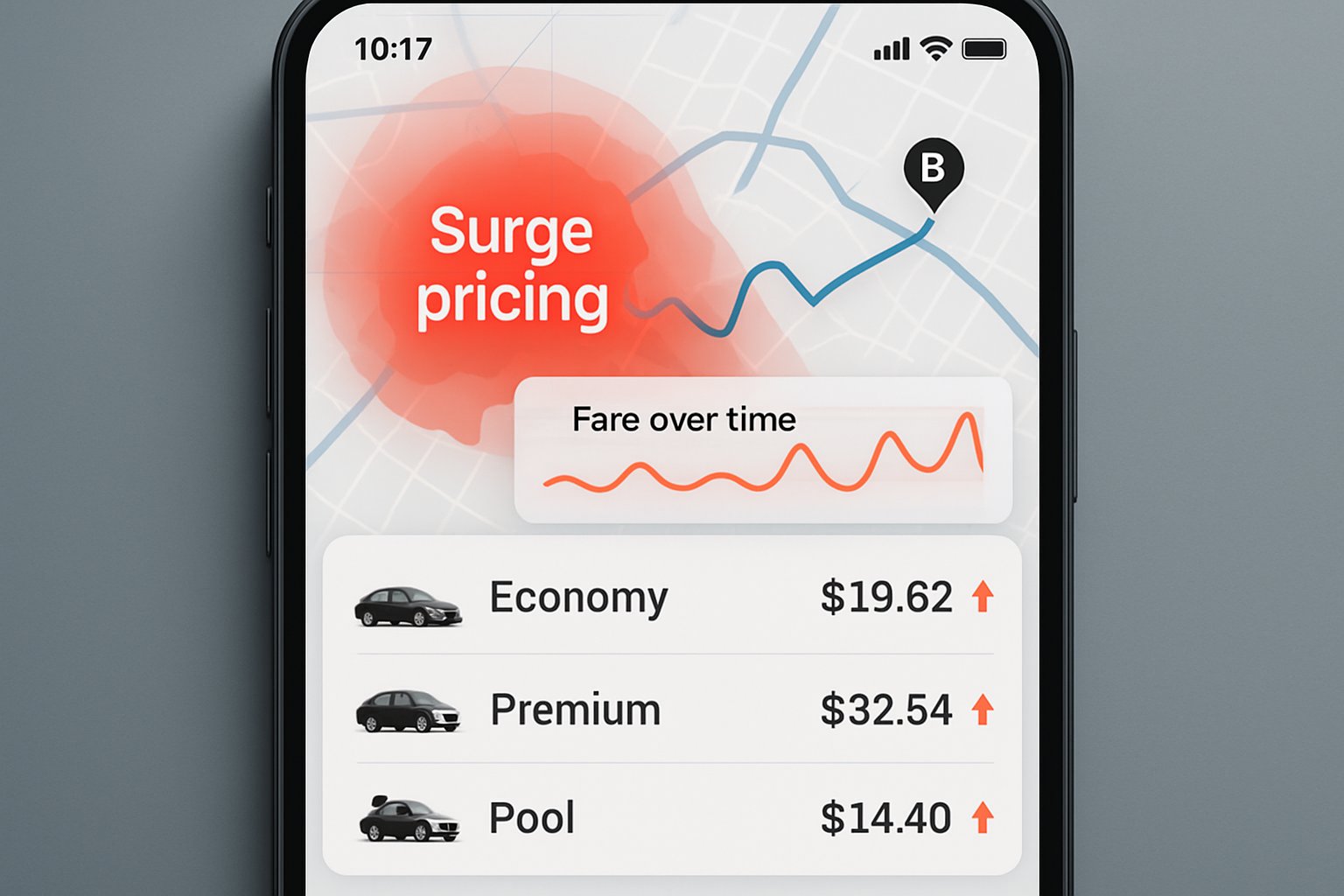
AI CERTS
3 hours ago
Dynamic Pricing reshapes ride-sharing economics
Moreover, lawmakers now draft algorithmic transparency rules to protect workers and consumers. Industry leaders, therefore need a clear, data-backed view of the technology, its economics, and looming compliance demands.
Dynamic Pricing Market Shift
Platform economics changed once companies abandoned static rate cards. In contrast, the new approach optimises each fare by watching real-time Supply-Demand signals. Columbia Business School found Uber's take rate climbed from 32% to 42% within two years of the switch. Additionally, University of Oxford auditors reported similar trends in the United Kingdom. Platforms argue the shift improves Ride-Sharing reliability by nudging drivers toward busy zones.

These findings confirm why investors reward pricing innovation. However, the same evidence sets the stage for deeper technical scrutiny explored next.
How Algorithms Really Work
Under the hood, platforms feed historical trip logs into forecasting Algorithms that predict near-term demand. Subsequently, optimisation layers test small price variations to gauge rider acceptance. Reinforcement learning agents then update policies, balancing Supply-Demand with margin targets. Uber states that personal characteristics never enter the model; nevertheless, researchers caution that geographic proxies may still produce unfair outcomes.
Dynamic Pricing therefore becomes a self-learning control system, adjusting fares and driver incentives every few seconds. Furthermore, decoupled driver pay formulas mean the same ride can yield different company margins even within a neighbourhood.
The technical design shows remarkable sophistication. Yet, as the next section reveals, sophisticated math does not guarantee equitable profits.
Profits And Key Pitfalls
Audits delivered stark profit estimates. Len Sherman's analysis linked Dynamic Pricing to an additional multibillion-dollar cash flow for Uber in 2024. Moreover, Oxford researchers calculated UK drivers lost $1.6 billion in earnings during the first post-rollout year. Consequently, critics argue that the practice shifts surplus from drivers to shareholders.
Platforms counter that Ride-Sharing markets would collapse without flexible prices. However, evidence shows that company take rates rose even when Supply-Demand imbalances stayed flat. Additionally, opaque Algorithms prevented drivers from forecasting weekly income, hampering personal budgeting.
Profitability gains please investors. Nevertheless, rising volatility fuels worker unease, a theme the next section quantifies.
Worker Impact Audit Findings
Large-scale audits supply granular pay data. Oxford’s participatory study tracked 1.5 million UK trips under Dynamic Pricing and classic surge regimes. Subsequently, the average platform cut retained rose four percentage points, while some trips saw driver pay halved. FTC actions against Lyft over inflated earnings claims further validate regulatory worries.
Meanwhile, driver groups assert that unpredictable income violates the spirit of independent contracting in Ride-Sharing. Furthermore, unions demand transparent breakdowns before each acceptance screen.
These audit figures highlight income volatility. In contrast, regulators now escalate oversight, as the following section explains.
Regulatory Heat Rapidly Rises
Governments worldwide respond to Dynamic Pricing controversies. In the United States, New York’s Algorithmic Pricing Disclosure Act now requires in-app notices when personal data shapes fares. Consequently, Uber and DoorDash launched updated consent screens in November 2025. European lawmakers meanwhile embed similar transparency clauses within the AI Act.
Additionally, the FTC fined Lyft $2.1 million for overstating driver earnings. Regulators signalled that future penalties will intensify if platforms conceal Algorithms or misrepresent pay. Moreover, class actions targeting unfair price discrimination loom in several states.
International Ride-Sharing rivals such as Didi and Grab monitor these developments, anticipating copycat legislation in Asia-Pacific.
Legal demands therefore push transparency higher on board agendas. The next section explores engineering tactics for compliance and competitiveness.
Engineering Response Tactics Today
Engineering teams adopt several tactics to align Dynamic Pricing with forthcoming rules. Firstly, they partition feature pipelines to remove sensitive attributes before model training. Secondly, explainability dashboards surface Supply-Demand traces that justify each fare to internal reviewers. Furthermore, simulation sandboxes allow stress tests against fairness metrics.
Moreover, companies pilot driver-side dashboards that reveal take rate components. These tools integrate reinforcement Algorithms that adjust payouts if fairness metrics drift. Professionals can enhance their expertise with the AI+ Sales™ certification, which covers responsible monetisation playbooks.
Meanwhile, open-source researchers release reproducible Ride-Sharing environments to benchmark control strategies. Consequently, collaboration between academia and industry accelerates best-practice adoption.
Technical advancements signal progress. Nevertheless, sustained trust demands broader strategic alignment, detailed below.
Strategic Takeaways Ahead
Boardrooms need actionable priorities amid evolving economics and Dynamic Pricing debates. The following list distils the most urgent steps.
- Audit Algorithms quarterly and publish high-level fairness scores.
- Track Supply-Demand elasticity to detect margin-driven distortions.
- Offer Ride-Sharing drivers granular pay forecasts and variance alerts.
- Engage regulators early with simplified impact assessments.
- Embed Dynamic Pricing governance into enterprise risk frameworks.
These actions create defensible competitive positions. Consequently, firms that move first can shape emerging standards and retain public trust.
Dynamic Pricing now defines the competitive frontier of urban mobility. Nevertheless, audits and enforcement show that opaque gains create lasting reputational risks. Consequently, winning platforms will pair technical excellence with genuine transparency for drivers, riders, and regulators. Moreover, leaders should invest in multidisciplinary oversight teams and industry certifications to reinforce ethical revenue design. Finally, stakeholders who master balanced price innovation will secure durable advantage as regulations tighten.



